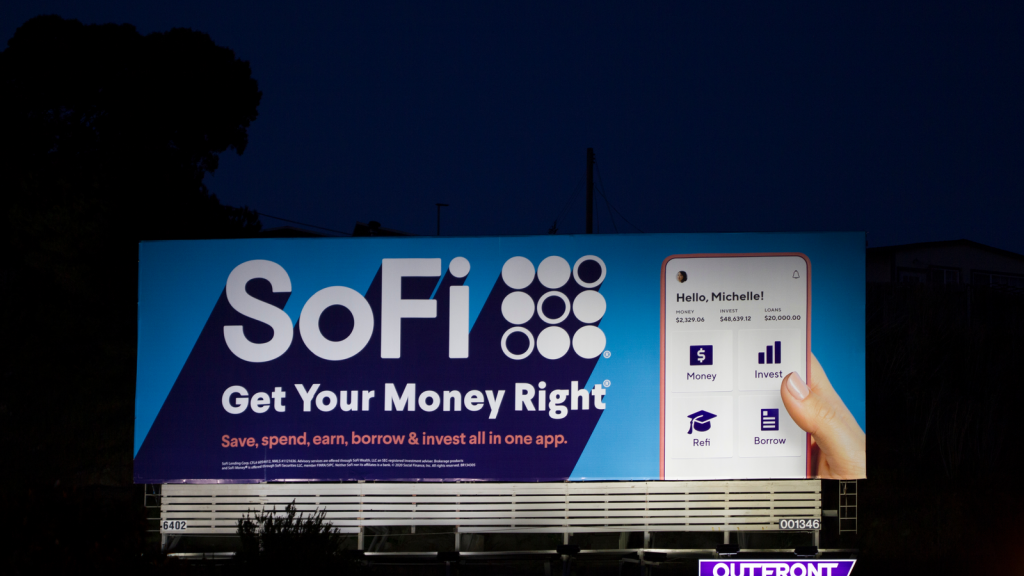SoFi (NASDAQ:SOFI) reported third-quarter results that showed strength in some areas. But the company remains unprofitable and its EBITDA actually dropped year-over-year last quarter, while a number of the bulls’ main theory theories on the company appear to be misguided. Moreover, boding badly for SOFI stock, many entities sold the shares in recent months, and the stock’s valuation is still excessive.

As a result of these points, I remain bearish on the company’s outlook.
Mixed Q3 Results
On the positive side, SoFi’s Q3 revenue jumped 96% year-over-year, while it added 377,000 net new members, the second-highest membership increase of any quarter in its history. Those strong metrics highlight the power of the company’s connections with young people that I’ve highlighted in the past.
On the negative side, SoFi’s bottom line came in at a loss of $30 million. What’s more, it reported Q3 EBITDA, excluding some items, of $10.26 million, well below the $33.5 million that it generated during the same period a year earlier.
Also noteworthy is that its stock-based compensation soared to $162 million from $70 million during the year-earlier period. Its high stock-based compensation indicates that it may be using its shares as a way to pay a large amount of its expenses. Moreover, as InvestorPlace columnist Ian Bezek pointed out in his Nov. 23 column, the company’s positive EBITDA is misleading because it excludes interest expenses, which are a core cost for lenders.
Bulls’ Misguided Theories
One of the bulls’ main theories is that SoFi’s financial services platform is highly differentiated from the apps of the many financial institutions that compete with it. I haven’t yet seen any clear and convincing evidence of such differentiation.
In a recent column published by Seeking Alpha, Leo Imasuen suggested that SoFi is seeking to offer many more financial services on its platform than its competitors.
But the company’s competitors appear to offer most financial services on their platforms. Chase, one of the banks that I use, for example, allows me to pay my home loan, my auto loan and my credit cards on its platform. The Chase platform also enables consumers to apply for personal loans using their credit cards, send money to anyone, refinance their homes, open an investment account and start applying for a new mortgage.
It does not appear to include a means of obtaining home or auto insurance or student loans. But most Americans change their insurance companies only infrequently and apply for student loans even more infrequently. Consequently, I don’t anticipate that the incorporation of these services on SoFi’s platform will enable the company to attract many new consumers or increase its profitability.
Bulls have also been upbeat on the company’s efforts to obtain a banking license. But I remember similar euphoria about efforts by Square, now known as Block (NYSE:SQ), to obtain a banking license a few years ago. Yet since the company actually started banking operations in March 2021, SQ stock has tumbled about 30%.
So no one should count on a potential banking license being a big catalyst for SOFI stock.
Multiple Entities Selling Shares
In recent months, many large entities have sold significant amounts of SOFI stock. For example, on Nov. 22, Seeking Alpha reported that SoftBank (OTCMKTS:SFTBY) had sold 22.5 million shares of the stock. Also in November, Social Capital, whose special-purpose acquisition company (SPAC) merged with SoFi, unloaded 15% of its shares of SoFi.
And in Q3, more hedge funds exited SoFi than any other name, Seeking Alpha reported.
Valuation and the Bottom Line on SOFI Stock
Despite its recent declines, SOFI stock is still changing hands for nearly eight times analysts’ average 2022 sales estimate. That’s a huge valuation for the shares, especially in light of the company’s significant profitability and competition challenges.
SoFi is using its connections with young Americans to grow rapidly, but its other issues will likely cause its shares to underperform the stock market going forward. Therefore, I recommend selling the shares.
On the date of publication, Larry Ramer did not have (either directly or indirectly) any positions in the securities mentioned in this article. The opinions expressed in this article are those of the writer, subject to the InvestorPlace.com Publishing Guidelines.
Larry has conducted research and written articles on U.S. stocks for 14 years. He has been employed by The Fly and Israel’s largest business newspaper, Globes. Among his highly successful contrarian picks have been solar stocks, Roku, Plug Power, and Snap. You can reach him on StockTwits at @larryramer. Larry began writing columns for InvestorPlace in 2015.
